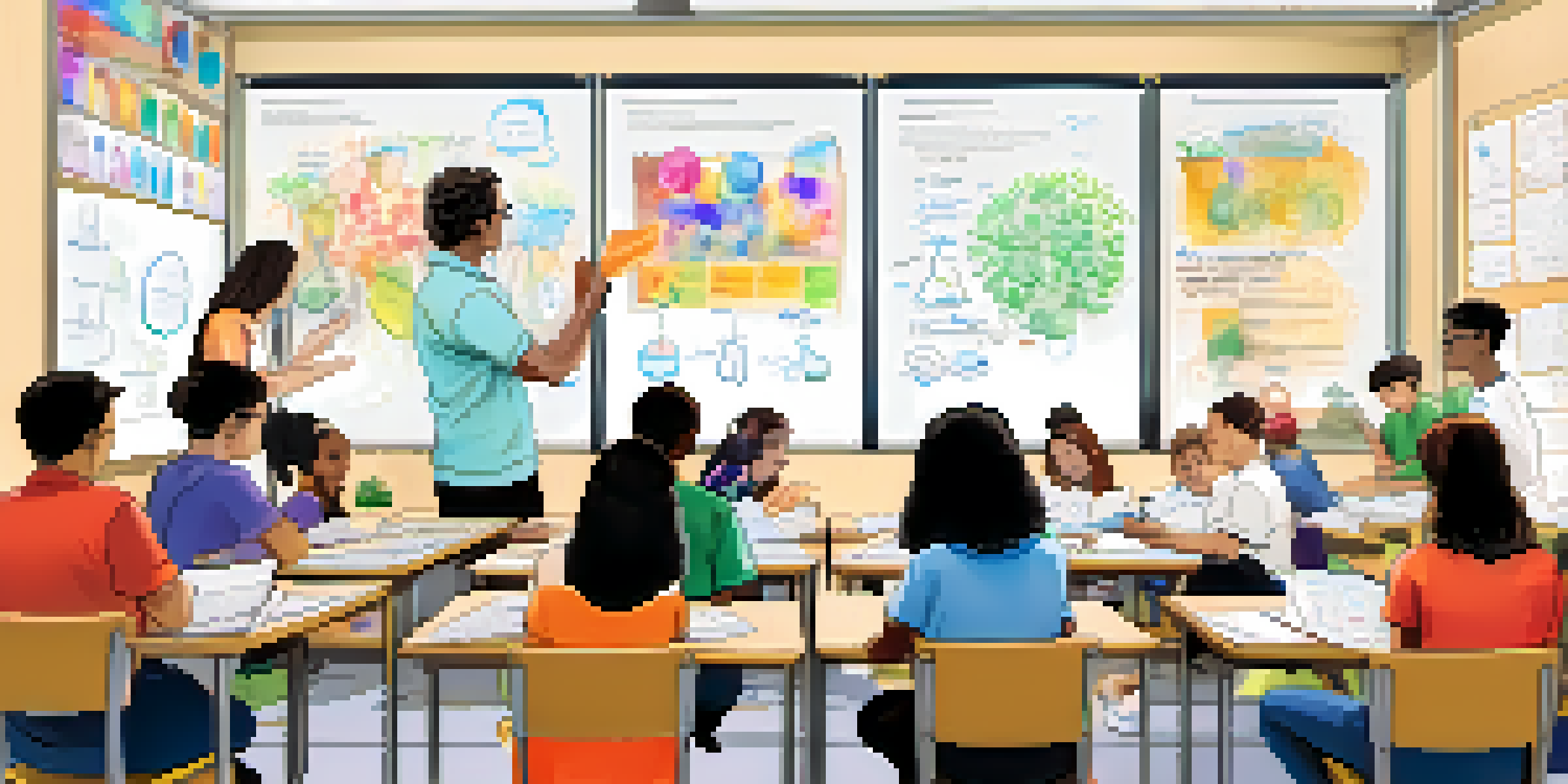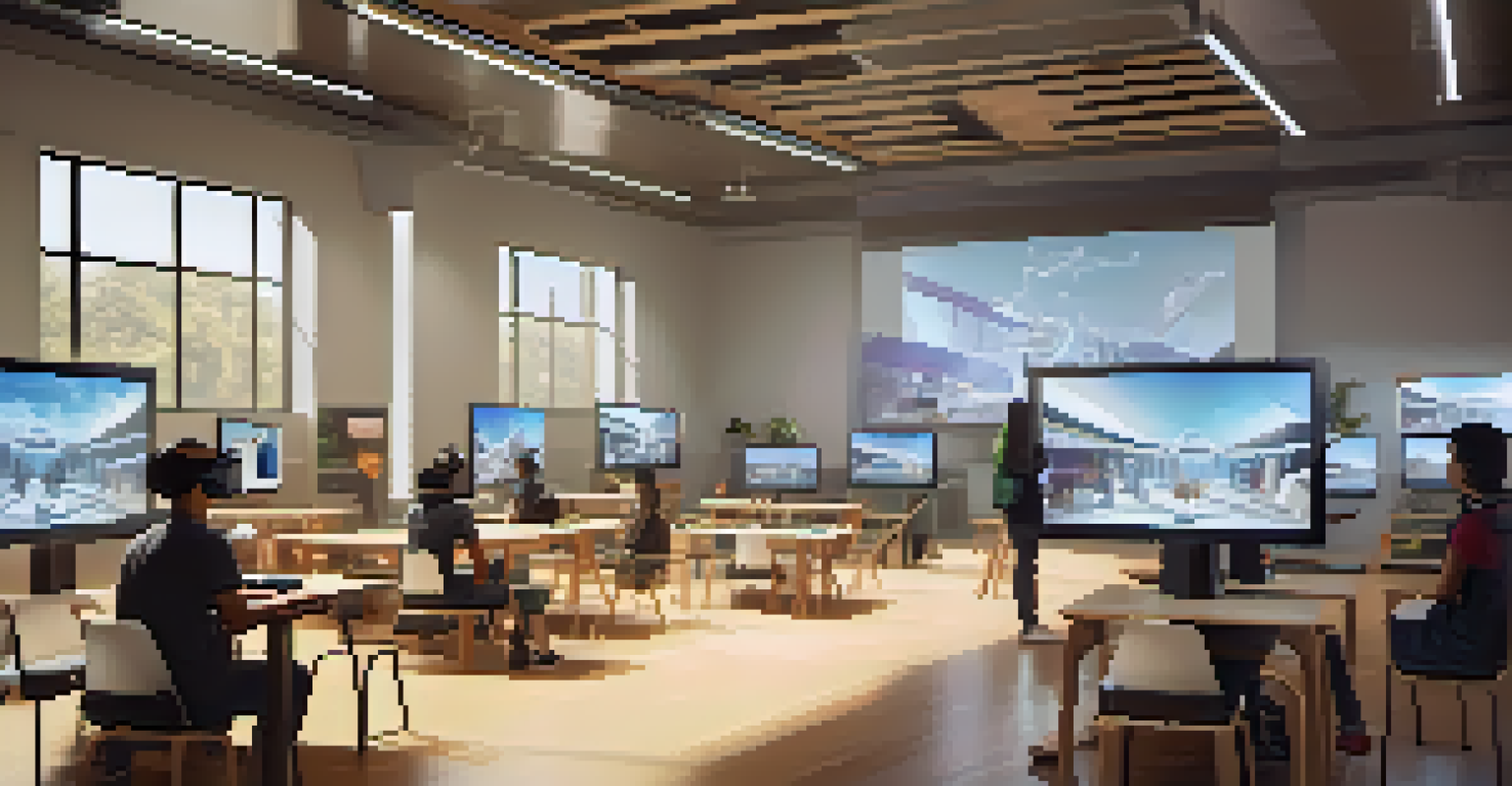Understanding Constructivist Learning: Key Principles Explained

What is Constructivist Learning? A Brief Overview
Constructivist learning is an educational philosophy that emphasizes how individuals construct their understanding and knowledge of the world through experiences. Instead of passively receiving information, learners engage actively by relating new information to what they already know. This approach encourages critical thinking and problem-solving, making learning a dynamic and interactive process.
The only real mistake is the one from which we learn nothing.
Imagine building a house; you start with a foundation and add each layer thoughtfully. Similarly, in constructivist learning, students build their knowledge step by step, integrating new concepts with prior knowledge. This method not only deepens understanding but also fosters retention, as learners make connections that resonate personally.
Ultimately, constructivist learning recognizes that everyone learns differently, shaped by their unique experiences and backgrounds. It promotes a personalized approach to education, where the learner is at the center of the process, actively constructing their knowledge rather than merely absorbing information.
The Role of the Teacher in Constructivist Learning
In a constructivist classroom, the teacher's role shifts from being the primary source of knowledge to that of a facilitator or guide. This means creating an environment where students feel comfortable exploring, questioning, and collaborating with their peers. Instead of lecturing, teachers encourage discussions and hands-on activities that spark curiosity and engagement.

Think of the teacher as a gardener, nurturing the growth of each student's unique abilities. By providing the right tools and support, teachers help learners discover their interests and passions. This involves asking open-ended questions, providing constructive feedback, and allowing students to take ownership of their learning journey.
Active Engagement in Learning
Constructivist learning emphasizes active participation, where students build understanding through hands-on experiences and collaboration.
This approach not only empowers students but also fosters a sense of community within the classroom. When teachers and students work together, learning becomes a shared experience, making it more meaningful and enjoyable for everyone involved.
Key Principles of Constructivist Learning Explained
There are several key principles that underpin constructivist learning, starting with the idea that knowledge is constructed rather than transmitted. This means that learners create their understanding through experiences and interactions, emphasizing the importance of context in the learning process. It’s less about memorizing facts and more about grasping concepts and applying them.
Learning is not the product of teaching. Learning is the product of the activity of learners.
Another principle is the importance of social interaction in learning. Constructivist theory posits that learning is a social activity, where collaboration and communication with others enhance understanding. Group work, discussions, and peer teaching are all strategies that promote this social dimension, allowing students to learn from one another.
Lastly, constructivist learning values authenticity in tasks and assessments. Rather than relying solely on standardized tests, educators are encouraged to create real-world challenges that require students to apply their knowledge in practical situations. This relevance makes learning more engaging and helps students see the value of what they are learning.
Encouraging Active Learning in Students
Active learning is a cornerstone of constructivist education, as it involves students in the learning process rather than having them sit passively. This can take many forms, such as problem-based learning, project-based learning, or even simulations. The key is to engage students in activities that require them to think critically and creatively.
For instance, instead of simply reading about a historical event, students might reenact it or create a documentary. This hands-on approach allows learners to explore the material deeply and from multiple perspectives, enhancing their understanding and retention. Active learning also makes the classroom more dynamic and enjoyable.
Teacher as a Facilitator
In a constructivist classroom, teachers guide and support students' exploration, fostering a collaborative environment that enhances learning.
Moreover, active learning encourages students to take risks and embrace mistakes as part of the learning process. When students feel safe to experiment and learn from their errors, they develop resilience and a growth mindset, which are essential skills for lifelong learning.
The Importance of Reflection in Learning
Reflection is a critical component of constructivist learning, as it allows students to make sense of their experiences and solidify their understanding. By taking the time to think about what they've learned and how they've learned it, students can identify gaps in their knowledge and areas for improvement. This self-awareness is key to becoming an effective learner.
Teachers can facilitate reflection through various strategies, such as journaling, group discussions, or one-on-one check-ins. These activities encourage students to articulate their thoughts and feelings about their learning processes, promoting deeper insights and connections. Reflection also reinforces the idea that learning is a continuous journey.
Ultimately, fostering a culture of reflection helps students become more autonomous learners. When they regularly assess their understanding and strategies, they are better equipped to navigate challenges and take charge of their own educational paths.
Leveraging Technology in Constructivist Learning
In today's digital age, technology plays a pivotal role in enhancing constructivist learning. Tools like interactive simulations, online collaborative platforms, and multimedia resources provide students with diverse ways to engage with content. These technologies can transform traditional learning experiences into immersive, interactive journeys.
For example, virtual reality can transport students to historical sites, allowing them to explore and interact with their surroundings in a way that textbooks simply cannot. Additionally, online forums and collaborative tools enable students to work together on projects, share ideas, and receive feedback in real time, mirroring the collaborative nature of constructivist learning.
Importance of Reflection
Reflection is essential in constructivist learning, enabling students to assess their understanding and become more autonomous learners.
Using technology thoughtfully can also cater to different learning styles and paces. With various resources at their fingertips, students can choose how they want to learn and engage with the material, making education more personalized and effective.
Assessing Learning in a Constructivist Framework
Assessment in a constructivist learning environment looks different from traditional methods. Rather than focusing solely on grades and standardized tests, assessment is continuous and formative, providing insights into students' understanding throughout the learning process. This approach allows for flexibility and adaptation based on individual needs.
For instance, teachers might use portfolios, peer assessments, or self-evaluations to gauge student progress. These methods encourage students to reflect on their learning and understand their growth over time, rather than just focusing on end results. This holistic view of assessment aligns with the constructivist belief that learning is an ongoing journey.

Moreover, incorporating diverse assessment strategies helps create a more inclusive classroom, where every student can demonstrate their understanding in a way that resonates with them. In this way, assessment becomes a tool for growth rather than just a measure of achievement.